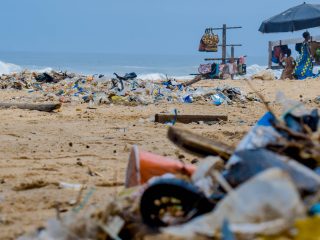As we approach a relaxation around the world on lockdown many pundits are using the opportunity to assess where we are and what we could or should have done better and earlier. While it is too soon to say the pandemic is coming to an end, it does look like societies are getting restless and governments are now focusing on the light at the end of the tunnel. We cannot second guess future peaks or what the new normal will become but what is becoming clearer is that the level of testing we have done here in the UK and the actual levels of infection are poles apart.
As the UK hasn’t suffered in the way Asian countries have in previous pandemics it is therefore understandable that our slow entry into lockdown, our inability to trace the virus as it spread and our lack of PPE have meant a higher impact from the virus. It is too easy to second guess what could have been, certainly from my family’s own personal tragedy, but we are where we are. What we have got wrong however, and what we need to fix urgently, it our reliance on statistics every day that are woefully inaccurate and misleading.
We have got used to a daily update on infections and deaths. The Government has been pushing for 100,000 tests per day initially for key workers and more recently for the rest of us. However, these tests are only accurate when you are actually infected and therefore don’t provide any kind of assessment as to whether you have had it previously or could catch it tomorrow. Secondly the official death toll is only based on those with a positive test prior to dying which has meant many thousands have not been included that have either died at home, as government advice has been to self-isolate, or in care homes where tests are not routine.
The issue with the self-isolate model is that many thousands have had mild symptoms, if none at all and so don’t register on any report. Living near Cheltenham and the infamous races that took place just before lockdown the feeling is that it many of the 70,000 visitors were infected let alone the services industry that watered, fed and housed the visitors. If most of those have suffered the same fate of the US aircraft carrier Theodore Roosevelt and French carrier Charles de Gaulle then the vast majority would have been asymptomatic and never showed any symptoms.
Initially when the aircraft carriers came down with COVID-19 the impression was that half of the sailors tested positive, whereas now the understanding is that everyone caught the virus while onboard. Obviously with a high number of young and fit individuals deaths have been low but it demonstrates that even in a defined environment the impression and initial reports were that not everyone had it but the reality is different.
Like many I had very similar symptoms to COVID-19 in early February as did the rest of my family and so did our friends and colleagues. Only now that other symptoms are being officially included in the likely diagnosis such as loss of taste and smell do other people realise that they too most likely had the virus either with visible results or none at all. Living in London during the week (prior to lockdown) and my wife as a police officer puts us at high risk in terms of catching and transmitting the disease. Likewise flying to Paris or on holiday skiing means the likelihood of contracting it high. However nobody in my immediate family registers on any report and most likely never will.
It is with this realisation that our high death toll in the UK starts to make sense. If many more of us have had and contracted the virus either with or without symptoms than official records report then our death results would look more in context. As it is we are comparing our performance with other countries that are all fudging their numbers without the true understanding in terms of deaths versus infections.
My hope is that the antibody test is made mandatory across the country which would help reset public understanding on the scale of the issue. It is vital we understand the full picture of how many of us have previously contracted the virus so that decisions around social distancing and lockdown, especially for industries such as travel and leisure, are made correctly. It also would enable us to start the tracing program more effectively especially as our borders have and continue to remain open. Only then will we have a true understanding on actually how effective measures have been in trying to stem the pandemic.





Leave a Reply